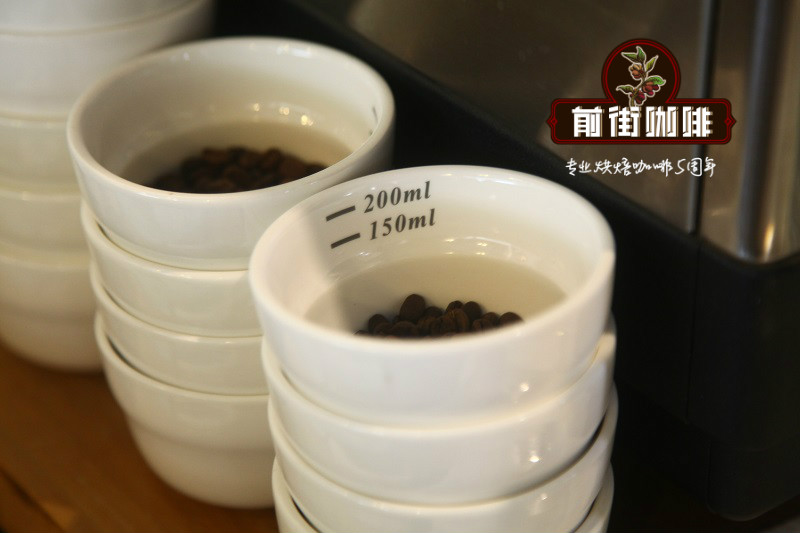Is there much Coffee Bean in Yemen? introduction to the Manor Price of the Coffee growing area in Yemen

Professional coffee knowledge exchange more coffee bean information please follow the coffee workshop (Wechat official account cafe_style)
Experts point out that if the trend of farmers abandoning coffee and planting Carter grass is not improved, Yemeni coffee will have no tomorrow. Experts concluded that the reasons for the disadvantages of coffee crops are as follows: drought and water shortage, lack of advanced irrigation systems, increased planting costs, serious diseases and insect pests, cheaper imported coffee and better profits than coffee. It seems that the problem is very complicated, and it may be difficult to increase coffee production in Yemen in a short period of time.
It is not easy to reverse the trend of replacing coffee trees with Carter grass alone, because it takes at least three to five years for a coffee plant to harvest, while Carter grass can sell candied fruit in one to two years, which is much more profitable than coffee, and Yemeni coffee is easy to grow. However, the Yemeni authorities are determined to restore the former glory of the coffee industry and, with the assistance of experts and donations from various countries, have in recent years promoted a coffee revitalization plan in Yafiya in the coastal province of Lahajah in the south. At present, there are dozens of hectares of coffee fields in this area, laying advanced irrigation systems and training coffee growers to cultivate 300000 coffee seedlings every year.
Yan Tong, a pest gnawing on coffee fruits in the Yemeni mountains, is estimated to lose 30% of its production per year. The Coffee Revitalization Program has partnered with Sana'a University to study ways to control insects with insects. It remains to be seen whether the plan will inject life into Yemen's moribund coffee industry.
Yemen is an ancient coffee-growing country, and some scholars believe that coffee trees arrived in Yemen from Harald, Ethiopia, ten centuries ago. It is also said that the coffee industry in Yemen did not develop until after the 12th century. For hundreds of years, Yemeni farmers have followed traditional methods of growing coffee. Although the air in the Yemeni mountains is dry, Rain Water is scarce, and the soil is not easy to retain moisture, it does not look like an environment suitable for coffee growth, but coffee farmers rely on their ancestors' experience and pass on from generation to generation to plant coffee trees on steep slopes or depressions in the valleys, or in the form of terraces, so as to facilitate the retention or absorption of precious water in the mountains. And most of the coffee is grown on the hillside descending from west to east to escape the bright sun in the afternoon and successfully breeds the unique coffee with wild and rich wind. After a field visit to the traditional coffee fields in Yemen, a research team composed of European and American experts pointed out that Yemen is the most difficult coffee planting land in the world, and the climate and soil and water here are not suitable for coffee growth, but Yemeni coffee trees have fully adapted to the severe environment for hundreds of years, and it may be difficult to survive if they are coffee varieties from Central and South America.
Important Notice :
前街咖啡 FrontStreet Coffee has moved to new addredd:
FrontStreet Coffee Address: 315,Donghua East Road,GuangZhou
Tel:020 38364473
- Prev

Yemeni coffee birth anecdotes coffee interesting stories beans knowledge
Professional coffee knowledge exchange more information on coffee beans Please follow the coffee workshop (Wechat official account cafe_style) mocha coffee beans, as the name implies, the word mocha comes from an ancient Yemeni port town on the Red Sea. Coffee produced in ancient Yemen is exported to Europe and other parts of the world through here. It is the earliest place to export coffee and is the ancestor of coffee trade, hence its name.
- Next

The Origin of Hawaiian Coffee when did Hawaii start growing coffee beans
For more information on coffee beans, please pay attention to the coffee workshop (Wechat official account cafe_style) Hawaii is the only coffee producing area located in developed countries. Although the elevation here is not high, the quality of the coffee produced here is not low due to the special island climate. Coffee was the first Spanish consultant during the time of King Kamehameha.
Related
- How did the Salvadoran coffee industry develop in Central America?
- What exactly does the golden cup extraction of coffee mean?
- The Origin of Coffee flower
- [2023 Starbucks World Earth Day] there are more meaningful things besides free Starbucks coffee!
- What kind of coffee is there in Spain? 9 Flavors of Spanish Coffee
- Aromatic African coffee| Kenya's coffee culture and historical production area
- Liberica Coffee Bean knowledge: the characteristics of Liberian Coffee beans of the three original species of Coffee beans
- The origin and formula of Spanish latte introduces the taste characteristics of Bombon coffee in Valencia, Spain.
- How to adjust the solution of over-extracted coffee
- What is the tasting period of coffee beans? What is the period of coffee and beans? How should coffee wake up and raise beans?

